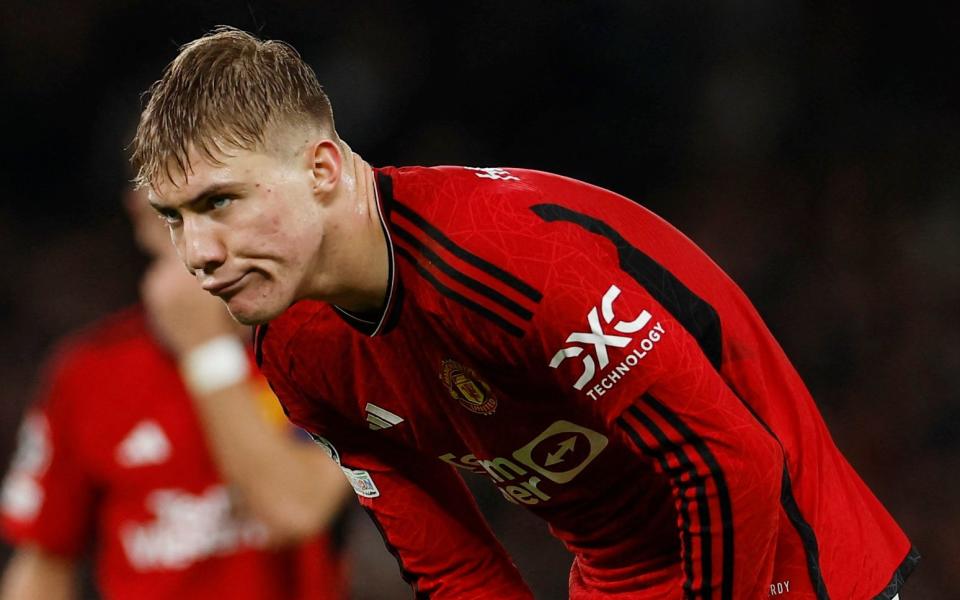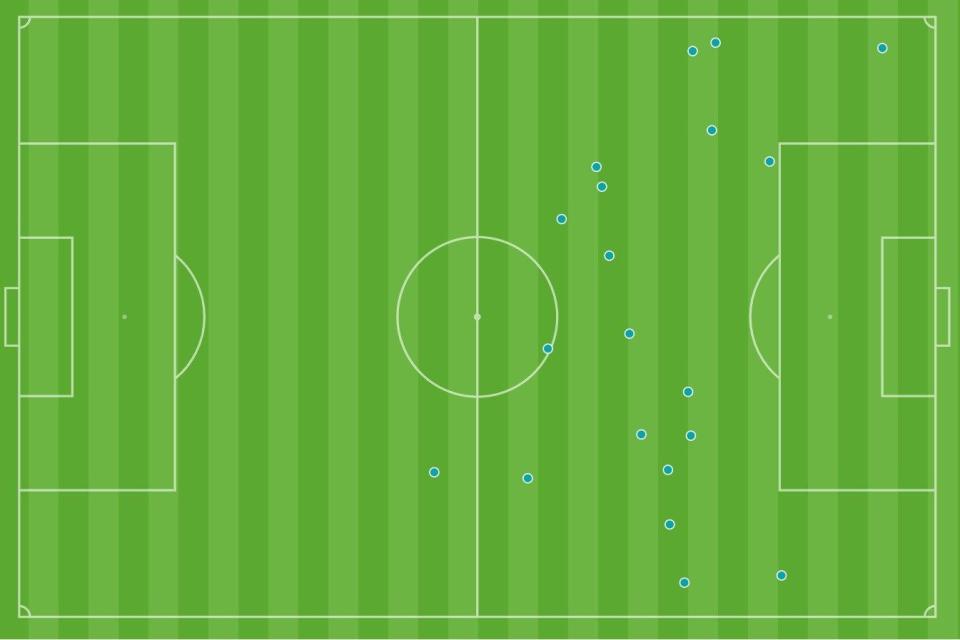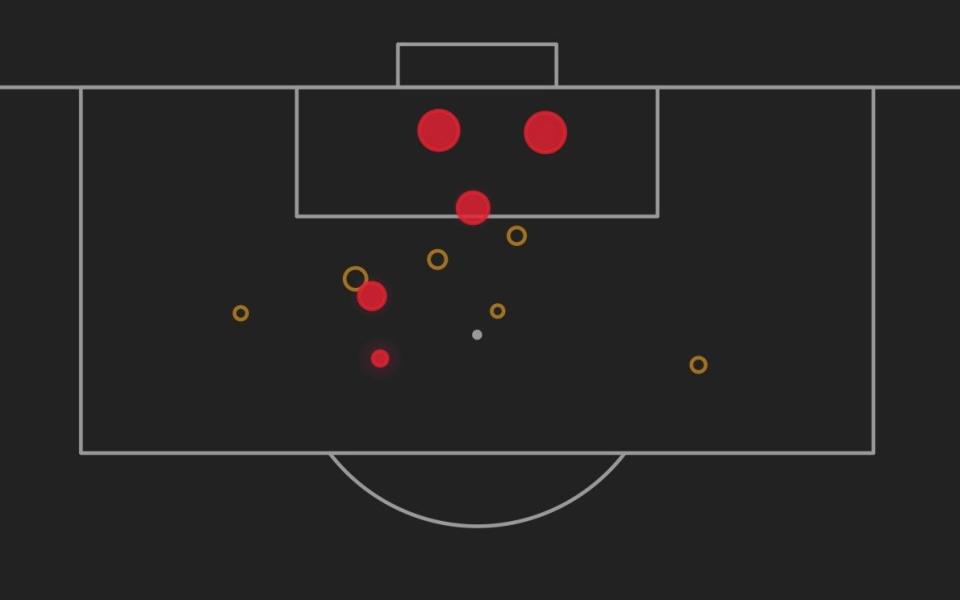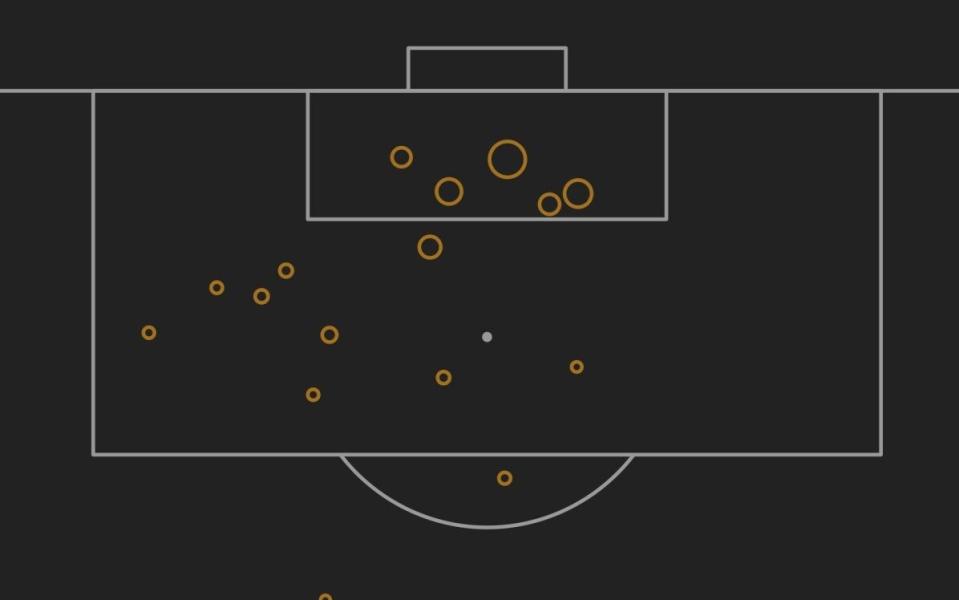Zero shots or touches in the box: Rasmus Hojlund has a problem

A curious quirk of Manchester United’s doomed Champions League campaign is that no player in the competition has scored more goals than Rasmus Hojlund’s five. Yet on the night their elimination was confirmed, their £72 million summer signing failed to muster a shot on goal or a touch in the Bayern Munich penalty area in a blunt collective performance.
European nights have provided some respite for United’s young striker, who is still awaiting his first goal or assist in Premier League football. Signing a player with just 20 Serie A starts to his name was a gamble by United, but overdue in the centre-forward position after a succession of sticking plasters such as Zlatan Ibrahimovic and Edinson Cavani. Whether Hojlund’s talent justifies that speculation is something any new project under Sir Jim Ratcliffe needs to discover.
United’s home game against Galatasaray provided flashes of a dynamic forward with serious running power. Hojlund scored twice that night, the second from a long driving run that suggests he is more comfortable facing the goal with space to attack. The 20-year-old’s problem against Bayern was that he found himself scrapping for crumbs with his back to goal. Bayern’s centre-halves Kim Min-jae and Dayot Upamecano bossed him in the duels, and made him look willowy.
It is not unusual for strikers to have relatively few touches, but Hojlund finished the game with the fewest of any player on the pitch with just 20. None of those came inside the box, although the lack of threat offered by Hojlund could be said to be a symptom of United’s dysfunction rather than the major cause.

The more worrying statistic at this early stage of his United career is that Hojlund is averaging just 1.8 shots per 90 minutes of Premier League football. There are 78 players in the division averaging more (minimum 500 minutes played), including Luton Town’s Carlton Morris and Crystal Palace’s Odsonne Édouard. The league’s best forwards tend to average at least three. An expected goals total of 2.5 indicates Hojlund has been a touch unfortunate not to at least get off the mark, but is hardly a stellar return from just shy of 800 minutes played.
Darwin Nunez has received plenty of flak for missing chances, but at least his underlying data signals that the goals should follow. In contrast with Hojlund, Nunez is averaging more than 4.5 shots per 90 minutes and 0.68 xG per 90 minutes, albeit in a much better Liverpool team. It is not so much that Hojlund’s finishing is letting him down but that he is struggling to find opportunities in the first place.
Hojlund’s 3.5 xG in the Champions League has turned into five goals, an overperformance which perhaps ‘corrects’ the underperformance he has suffered domestically. Interestingly, Hojlund’s chance quality has doubled in the Champions League compared with the Premier League, with his expected goals per shot jumping from 0.16 to a much healthier 0.32.
Though we should be wary of small sample sizes, Hojlund’s shot maps show his United team-mates have done a better job of finding him in dangerous positions in Europe:


United are still trying to work out what they have in Hojlund and how best to surround him. The absence of many Premier League shots between the six-yard line and the penalty spot shows United have struggled to find their striker with cut-backs.
Hojlund scored nine league goals for Gian Piero Gasperini’s Atalanta, who attack through their wing-backs in a 3-4-3, particularly Robin Gosens. Both wing-backs play on their stronger side, with a focus on delivering early into the penalty area. By contrast, United use inverted wingers such as Anthony, who want to chop inside. Marcus Rashford operates more like a second striker from the left, rather than as a winger looking to provide.
If Hojlund has a strength, it appears to be dashing across defenders to attack lateral passes and crosses into the penalty area, with a penchant for first-time finishes. United are not currently set up to provide such service, and Hojlund is suffering. He would not be the first player to arrive at Old Trafford only to find there is not much of a plan to complement his best attributes. Hojlund has time on his side, but there will be no European football after Christmas to help accelerate his adaptation.

